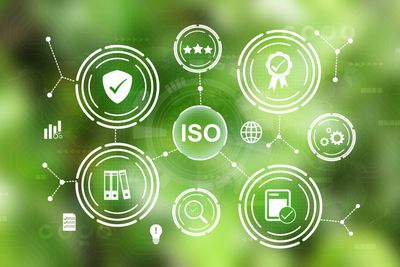Sustainability and Technology

Technology as an enabler for Sustainability Initiatives
Technology is a powerful enabler for sustainability initiatives, offering innovative solutions across various sectors. From monitoring environmental changes to optimizing resource use, here's how technology plays a crucial role:
1. Data Collection, Monitoring, and Analysis:
- Sensors and IoT (Internet of Things): Thousands of connected sensors can monitor real-time environmental data like air quality (PM2.5, CO2 levels), water quality (pH, pollutants), soil moisture, temperature, and energy consumption in buildings. This granular data helps identify problem areas, track trends, and measure the impact of sustainability efforts.
- Satellite Imagery and Drones: These provide high-resolution data for large-scale monitoring. They can track deforestation, monitor glacier melt, assess crop health, detect illegal logging or poaching, and map urban growth.
- Big Data Analytics: The vast amounts of data collected are processed and analyzed using big data tools. This helps identify patterns, predict future trends (e.g., flood risks, energy demand spikes), and gain insights that would be impossible to see manually.
- AI and Machine Learning (ML): AI and ML algorithms can analyze complex datasets to optimize processes, predict outcomes, and automate decision-making. For example, AI can predict energy consumption in smart grids, identify failing equipment, or optimize waste collection routes.
2. Resource Efficiency and Optimization:
- Smart Grids: These intelligent energy networks use real-time data to balance electricity supply and demand, integrate renewable energy sources more effectively, and reduce energy waste.
- Smart Homes and Buildings: IoT-enabled devices, smart thermostats, and automated lighting systems can optimize energy consumption in homes and commercial buildings, reducing heating, cooling, and lighting needs.
- Precision Agriculture: Drones, sensors, and AI analyze soil conditions, crop health, and weather patterns. This allows farmers to precisely apply water, fertilizers, and pesticides, minimizing waste and maximizing yields.
- Smart Water Management: Sensors can detect leaks in water pipes, monitor water levels in reservoirs, and automate irrigation systems, leading to significant water savings.
3. Renewable Energy Advancement:
- Improved Efficiency and Cost Reduction: Technological advancements have made solar panels, wind turbines, and energy storage systems (batteries) more efficient and affordable, accelerating the transition from fossil fuels to clean energy.
- Predictive Analytics for Renewables: AI and weather forecasting technologies can predict wind conditions and solar irradiance, optimizing the output of renewable energy plants and integrating them smoothly into the grid.
4. Waste Management and Circular Economy:
- Smart Waste Bins: IoT-enabled bins can signal when they are full, optimizing collection routes and reducing fuel consumption for waste vehicles.
- Automated Sorting and Recycling: AI and robotics are being used in recycling facilities to sort materials more efficiently, increasing recycling rates and reducing contamination.
- Waste-to-Energy Technologies: Advanced technologies convert organic waste into energy, reducing landfill volume and generating power.
- Digital Platforms for Reuse and Repair: Online platforms connect individuals and businesses for reusing items, repairing electronics, and sharing resources, promoting a circular economy.
5. Sustainable Transportation:
- Electric Vehicles (EVs): Advancements in battery technology, charging infrastructure, and EV manufacturing are making electric cars, buses, and two-wheelers more viable, significantly reducing tailpipe emissions.
- Smart Traffic Management: AI-powered systems can analyze real-time traffic data to optimize traffic flow, reduce congestion, and lower emissions from idling vehicles.
- Ride-sharing and Public Transport Apps: These technologies make sustainable transportation options more convenient and accessible.
6. Climate Change Mitigation and Adaptation:
- Carbon Capture and Storage (CCS): Technologies designed to capture carbon dioxide emissions from industrial sources and store them underground or convert them into useful products.
- Early Warning Systems: Technology-driven systems use weather data, satellite imagery, and AI to predict extreme weather events (floods, heatwaves, storms), allowing communities to prepare and adapt.
- Climate Modeling: Supercomputers and advanced algorithms simulate climate scenarios, helping scientists understand the impacts of climate change and develop mitigation strategies.
Challenges to Consider:
While technology offers immense potential, it's crucial to acknowledge its own environmental footprint (e.g., energy consumption of data centers, e-waste from discarded devices) and ensure that the deployment of sustainable technologies is done ethically and equitably. Responsible governance and sustainable design principles are essential for maximizing the positive impact of technology on sustainability.
Copyright © 2025 The Sustainability Initiative - All Rights Reserved.
Powered by GoDaddy
This website uses cookies.
We use cookies to analyze website traffic and optimize your website experience. By accepting our use of cookies, your data will be aggregated with all other user data.